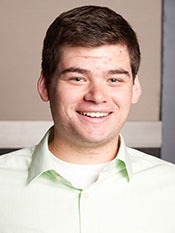Program Information
Removing Interpolation Artifacts in Respiratory-Gated 4DCT for Improved Ventilation Estimation
T Patton1*, S Gerard2 , G Christensen2 , J Reinhardt2 , J Bayouth1 , (1) University of Madison-Wisconsin, Madison, WI, (2) University of Iowa, Iowa City, IA
Presentations
TU-L-GePD-J(A)-1 (Tuesday, August 1, 2017) 1:15 PM - 1:45 PM Room: Joint Imaging-Therapy ePoster Lounge - A
Purpose: Deformable image registration of pulmonary 4D computed tomography (4DCT) datasets is used to calculate regional lung function. This functional information is being used in clinical trials with lung cancer patients to reduce dose to high-function regions of the lungs. This study aimed to reduce the interpolation artifacts found on 4DCT images to create more accurate lung function maps.
Methods: 4DCT datasets were acquired for five subjects on a Siemens Edge CT scanner before radiation therapy treatment for lung cancer. The subjects followed breathing instructions and all had breathing periods less than 5 seconds. Each subject had images reconstructed at full inhalation (100IN) and at full exhalation (0EX). For each phase, two images were reconstructed, one following conventional protocol and one using two adjacent respiratory-gated triggers for each image stack, effectively shortening the couch travel and removing the interpolation between stacks. An algorithm to compute the number of interpolation artifacts present in an image was developed using the difference in Hounsfield units between consecutive slices. This was compared to a manual count done by an observer.
Results: The algorithm detected an average of 8.6 (± 1.8) interpolation artifacts per image compared to a manual count of 10.8 (± 1.2) interpolation artifacts in the conventionally reconstructed 4DCT dataset. In each of two of the ten corrected images, the algorithm detected one interpolation artifact, and in the remaining eight corrected images zero artifacts were detected. The observer counted zero interpolation artifacts in all ten of the images reconstructed for artifact removal.
Conclusion: Interpolation artifacts can be removed from 100IN and 0EX 4DCT images acquired on a Siemens Edge CT scanner. This was verified by both manual count and an interpolation artifact detection algorithm.
Funding Support, Disclosures, and Conflict of Interest: NIH grant CA166703
Contact Email:
